Star Trek: Strange New Worlds came like a lightning bolt to the franchise. The prequel show takes viewers to Captain Christopher Pike's era aboard the USS Enterprise. The show is set from 2259 to 2261, bridging the gap between Star Trek: Discovery and Star Trek: The Original Series.
The executive producers, Henry Alonso Myers and Akiva Goldsman, crafted something unique here. They are lifelong fans who saw black spaces in Trek history. Those spaces turned into opportunities.
The series not only fills gaps. It rewrites the whole chapters of what fans thought they knew. From timelines to characters, Star Trek: Strange New Worlds reimagines the 23rd century with courage. Some transformations spark debate. In comparison, others feel that it is a natural evolution. But each one matters to the larger tapestry of Trek lore.
7 most dramatic changes Star Trek: Strange New Worlds has to the canon universe
1) World War III gets a new timeline
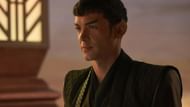
The history books in the Trek universe deal with change. Star Trek: Strange New Worlds transitioned from the 1990s to the mid-21st century, mirroring the era of World War III.
The Eugenics Wars accompanied the ride. Pike explains this to the people of Kiley 279 in the show premiere. The former timeline had Khan Noonien Singh leaving Earth in the 1990s. That no longer fits. This single transformation creates ripples across years of established canon. It's like pulling one thread and watching the entire sweater unravel. The adjustment makes sense to urban audiences.
A 1990s world war feels dated in the present. But it fundamentally changes Khan's story and everything related to it. The war now takes place in a more distant future setting.
2) Khan's birth year shifts backward
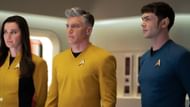
While talking about Khan, Star Trek: Strange New Worlds season 2 drops another shocker. Lieutenant La'an Noonien-Singh travels back to Toronto in 2022.
There she discovers young Khan at the Noonien-Singh Institute for Cultural Growth. This means Khan was born years ago than previously established. The episode Tomorrow and Tomorrow and Tomorrow reveals that Romulan temporal agents meddled with the timeline. How this reconciles with "Space Seed" from Star Trek: The Original Series remains unclear.
It turns into a complex riddle. La'an's connection to Khan adds personal stakes to the narrative. She carries his legacy and his name. The time travel element raises questions about causality and what actually happened in the past.
3) The Gorn transform completely
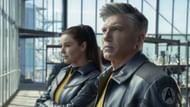
Star Trek: Strange New Worlds Gorn into something terrifying. They are no longer slow-moving reptiles in rubber suits. The new Gorn are Cannibalistic predators.
Their young gesttae inside hosts like creatures from Alien. They became the main villain of the show across three seasons. Lieutenant Erica Ortegas befriends a Gorn pilot. The species displays individuality.
They are not just mindless predators after all. This change makes them credible threats. New special effects allow for more authentic alien designs. The Gorn now inspire real fear. But the series also explores their culture and serves them depth beyond simple antagonism.
4) The Metron appears early
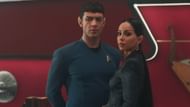
The Metron space gods appear years ahead of schedule. In Star Trek: Strange New Worlds, they reveal themselves to Ortegas in Terrarium. Captain Kirk will not meet them until later in Star Trek: The Original Series.
These powerful beings appear to be obsessed with human-Gorn relations. They manipulate events to see if coexistence is available. Myers and Goldsmen hinted that the Metron might have changed reality. They erased all knowledge between Gorn and humans. That would explain why Kirk knows nothing about them in Arena.
The Metron stays mysterious even after their appearance. Their motives are not clear. They conduct experiments on lower species like scientists analysing insects.
5) Trelane joins the Q Continuum
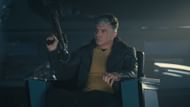
Fans had long theorized that Trelane was Q. Star Trek: Strange New Worlds confirmed this as official canon. The episode Wedding Bell Blues brings back the cosmic problems.
Rhys Darby portrays him with vibrant mischief. At the end, his father shows up. John de Lancie voices the elder Q, confirming Trelane's membership in the Continuum. This connection validates years of fan speculation. It also creates a direct link between Star Trek: The Original Series and Star Trek: The Next Generation.
The Q Continuum remains a constant presence throughout Trek history. Trelane's naive behaviour now makes perfect sense. He's a young Q learning about responsibility and power.
6) Kirk and Spock's friendship gets an origin story
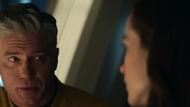
Star Trek: Strange New Worlds finally tells about their friendship. Their first meeting occurs at the end of the second season. Uhura introduces them. But friendship takes time. The third season displays Spock supporting Captain Kirk during a crisis. The finale of the season gets deeper. Kirk and Spock share a mind-meld.
The intimate connection becomes the foundation of everything viewers love about their relationship in Star Trek: The Original Series and the films.
Paul Wesley brings nuance to young Kirk. Ethan Peck captures Spock's rational nature with accuracy. Watching them come closer feels natural. Their dynamic builds through minor moments until they declare friendship.
7) Holodecks existed but failed
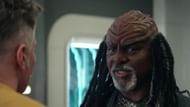
Technology does not always progress smoothly. Star Trek: Strange New Worlds reveals 23rd-century starships had holodeck technology. But it failed to work. The episode A Space Adventure Hour displays La'an testing the system.The power drain proved too huge for practical use. This explains why
Star Trek: The Next Generation treats holodecks as relatively new years later.Often innovations require waiting for the right moment. The Enterprise eventually gained a recreation room in Star Trek: The Animated Series, but that differs from the advanced holodecks fans are familiar with. Failed technology adds authenticity to the Trek universe. Not every invention succeeds immediately. Engineers require time to solve issues and improve energy efficiency.
Star Trek: Strange New Worlds embraces its role as a bridge between centuries. The series respects Trek history while unconventionally reimagining certain aspects of it. These changes spark conversations and keep the franchise relevant and alive.
